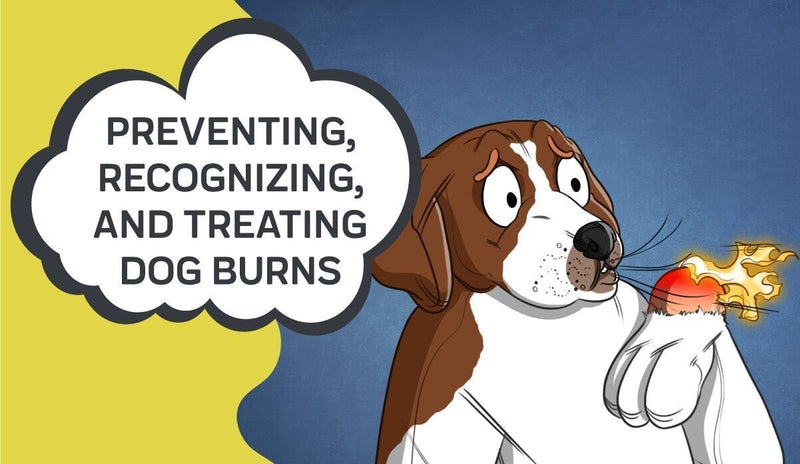CBD And CO2 Extraction
![]() Reading Time:
Reading Time:
- The Basics Of CO2 Extraction
- What Else Can Liquid CO2 Extraction Be Used For?
- Final Thoughts On The Carbon Dioxide CBD Extraction Process
From ancient methods such as smacking the crop against a screen to accidental fires from stoners using butane, there is a long list of extraction methods we can use to collect the therapeutic phytochemicals from the cannabis plant. However, as you can see above, not all the extraction methods are created equal.
Introducing Carbon Dioxide (CO2) Extraction, otherwise known as the most popular extraction method for creating pure, safe, and non-toxic hemp CBD products.
With cannabis plants comprised of a range of cannabinoids, terpenes, and other compounds, CBDs that use carbon dioxide for the extraction process have long been our favorite, regardless if its full spectrum or another form. And you'll find this statement rings true amongst the best in the cannabis industry.
The Basics Of CO2 Extraction
With a higher density than air, CO2 is a colorless gas composed of a single carbon atom that’s double bonded to two oxygen atoms. While fairly simple, CO2 is one of the most versatile compounds around. In the industrial world alone, CO2 helps create fire extinguishers, adds effervescence to drinks, and turns caffeinated coffee into decaf coffee. In fact, the process used in the last example is the same process that’s often used to pluck away certain phytochemicals in the hemp plant to create CBD oil and other products.
CO2 is actually regarded as the favorite solvent and extraction method for removing CBD and the other cannabinoids and terpenes from hemp.
There are many ways to extract these compounds from cannabis as they are only found in the resin that coats the plant’s flowers, leaves, and to a much lesser extent the stems. Called trichomes, these near-microscopic crystalline-looking trees can be easily removed from the plant in several ways.
One simple way is by rubbing the flowers against a fine screen, breaking off the trichomes so they can pass through and be collected. Known as kief in this state, one can simply place this extract in their vape or whatever their preferred heating device is and consume their hemp-derived extract this way. However, from both poor extraction methods that can damage the phytochemicals to consuming useless plant matter like chlorophyll, waxes, and lipids, this crude and simple extraction practice pales in comparison to advanced solvent methods like CO2 extraction.
The CO2 extraction process can produce a cannabis product with better benefits, greater potency, and less junk. And there are two ways we can use CO2 to extract the desirable therapeutic compounds from cannabis — supercritical CO2 extraction and subcritical CO2 extraction.
While there are some key differences between them, it's best to simply think of one as a more sophisticated and refined version of the other. To learn how to extract CBD from hemp with CO2, let’s start with our simpler method, which happens to be the preferred form by most manufacturers, supercritical fluid CO2 extraction.
Supercritical CO2 Extraction
While most of us are most familiar with carbon dioxide in its gas form, you may remember from science class that gas doesn't always stay a gas when exposed to different temperatures and pressures. When gas hits a certain temperature and pressure, the atoms start getting cold and huddle together (kinetic energy), forming it into a liquid after it surpasses a certain temperature. But if you keep your temperature right above this point, you put your gas in a supercritical state and can turn it into a hybrid gas/liquid.
This is the principle behind CO2 extractions methods like supercritical fluid and subcritical. When our hemp flowers and anything else that’s coated in our trichomes come across our CO2, its supercritical hybrid state allows it to easily move through the trichomes like a gas, but it’s liquid enough to break off the trichomes from the rest of the plant material.
After that, we aren’t done as we need to remove carbon dioxide residue from our CO2 extraction. To do this, we take lower our temperature and pressure separating the cannabinoids and other phytochemicals from all traces of CO2. But to avoid dropping the temperature and pressure of the cannabis extract too much, heat is reintroduced. This is one of the key differences between supercritical CO2 and subcritical. After a cannabis extraction has gone through the reheating process, the remaining cannabis material is taken through winterization where temperatures are again manipulated to remove lips and waxes that are also found in the trichomes.
While heat is needed in the supercritical CO2 process to prevent the cold temperatures from destroying the cannabinoids and terpenes, the rapid increase in temperature and heat itself can damage certain phytocannabinoids (particularly, a few of the terpenes). Subcritical avoids using heat, but this causes the entire process to take much longer, produce smaller batches, and it increases production costs significantly. This is why the great majority of manufacturers prefer to use supercritical CO2 extraction.
Subcritical Extraction
To avoid using heat that potentially damages some key phytochemicals in our plant material like certain terpenes, subcritical extraction uses a lower temperature and pressure. The process takes longer, produces notable smaller batches, but the extract is higher in quality because it doesn’t risk damaging the heat-sensitive trichomes. Another bonus is that subcritical CO2 extraction is able to separate the cannabinoids, terpenes, and flavonoids from the waxes and lipids, avoiding the need for the winterization process. However, this doesn’t make up for the issues that come from subcritical CO2 extraction vs. supercritical CO2 extraction.
As well, it’s difficult to say whether the extra time, energy, and cost produces a notably better quality full spectrum cannabis extract that provides greater benefits.
Is CO2 Extraction Safe?
CO2 is a solvate-free extraction, not solventless, but that doesn’t make it any less safe. In fact, CO2 is widely considered the preferred method for creating cannabis extracts commercially because the extraction process creates cannabis products that are completely safe, non-toxic, and clean while retaining an incredible quality that’s better than what you get straight off the plant.
Both subcritical and supercritical carbon dioxide extractions are generally preferable to volatile organic compound (VOC) solvents such as butane. However, while butane or propane is more dangerous to work with because they are so highly flammable and used harsher chemicals, they can and are often used to create safe cannabis concentrates. You can find these extracts labeled BHO and PHO, respectively. Like CO2 extracts, these are solvate-free extractions, meaning while it was extracted with a solvent, the end result contains no solvent residue.
Is CO2 Extraction Better?
When looking to create cannabis extracts at home like CBD oil, CO2 extraction is not a great option because of the expense and complexity of the CO2 extraction equipment. However, commercially, CO2 is the unmatched and superior extraction method because it produces such a safe, clean, and potent plant extract. As well, thanks to technology CO2 extraction is able to separate the individual cannabinoids and terpenes from each other. This can create unique CBD extracts that cater to specific illnesses or a more potent general cannabis oil because it gets rid of less therapeutic phytochemicals.
How Much Does A CO2 Extractor Cost?
Looking to buy yourself some CO2 extraction equipment? Well, hopefully, you have an extra $134,000-150,000 laying around as that's the cost of the CO2 extraction machine alone. Keyword being "alone" because you'll need other equipment.
So yeah, you're going need to bump up that budget even more. As well you'll need a rotary evaporator and centrifuge, which costs between $20,000 to $35,000. This is why many CBD manufacturers in the cannabis industry outsource and have their plant material extracted for them. No harm in this, especially since it opens time up for them to focus on other parts in achieving quality while letting those that specialized in professional cannabis extraction do what they do best.
What Else Can Liquid CO2 Extraction Be Used For?
Today, liquid CO2 extraction is becoming most abundantly used to create CBD and other cannabis extracts. However, cannabis extracts weren’t the first products created with this method. Nor are they the only ones produced today with it. CO2 extraction is used to remove caffeine from coffee, separate the terpenes from various plants to create essential oils, and whenever we want to separate non-polar lipophilic compounds like essential oils, carotenoids, terpenes, oil-soluble vitamins, unsaturated oils, and alkaloids.
Like with cannabis extraction, both subcritical and supercritical can be used, with CO2 supercritical fluid being the most popular, creating extracts from plant material.
Final Thoughts On The Carbon Dioxide CBD Extraction Process
Using CO2 or carbon dioxide for cannabis extractions, whether through subcritical or supercritical CO2 extraction, is largely regarded as the best choice for creating pure, clean, and safe cannabis products.
Using CO2 for extracting the therapeutic and active compounds from the cannabis plant is non-toxic, leaves no residue, and is eco-friendly because it recycles CO2 internally, preventing it from contributing to the issue of greenhouse gasses. Unlike other solvent-based methods, it's non-flammable and poses no risk of accidental release. What's not to love?!
The top dog in creating cannabis extractions, it's easy to see why temperature-controlled and pressurized carbon dioxide is the standard in the industry. For all these reasons and more, you'll only find we use CO2 extractions for all of our CBDs.













